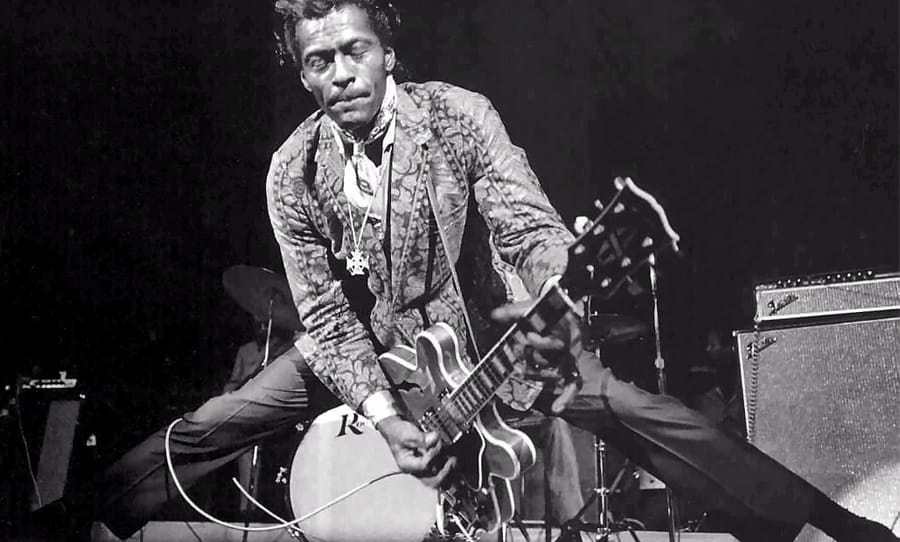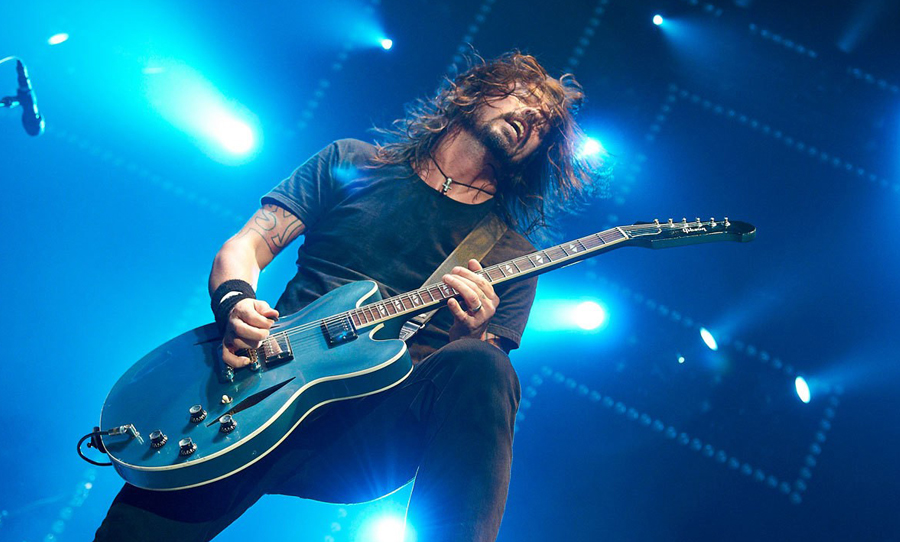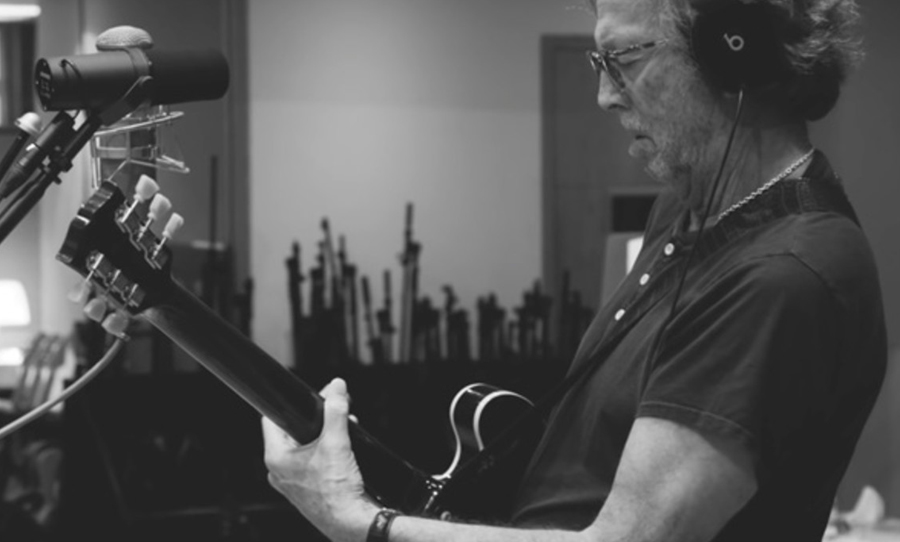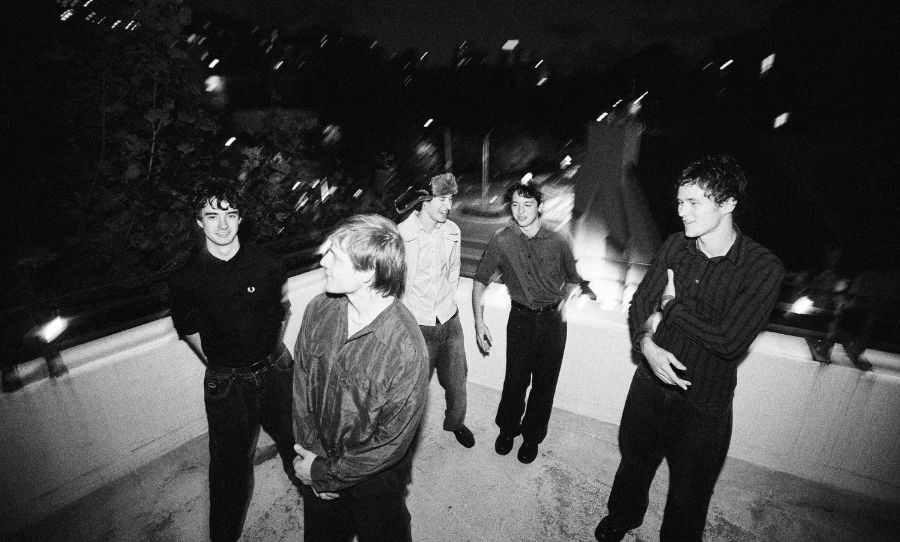The Gibson ES-335 was the world’s first commercial thinline archtop semi-acoustic electric guitar. It was released by Gibson in 1958 as part of their Electric Spanish series, which was an attempt to blend the arch top heritage of the series with the rising popularity of rock-and-roll playing.
The ES-335 combined an innovative visual design (large body, venetian cutaways, f holes) with coveted tone woods that gave the guitar an undeniably soulful character. These factors made this model a steadfast icon of rock, blues, and jazz. Let’s explore the magic of the semi-hollowed, with five reasons why the guitar rose to this status, and of course stays on top of the heap.
 A new approach to electric guitar building that built on an already impressive legacy of hollow-bodied design made Gibson’s ES-335 a game-changer. Read on as we explore the factors that contributed to its incredible success.
A new approach to electric guitar building that built on an already impressive legacy of hollow-bodied design made Gibson’s ES-335 a game-changer. Read on as we explore the factors that contributed to its incredible success.
A New Design
Before the Les Paul, Gibson made exclusively hollow-bodied guitars. The direction of modern music however, required more and more volume. Because of the tendency of these hollow bodies to feed back, Gibson bent to the market, engineering solid body models. Though with this of course came the lack of unamplified volume, and loss of warmth and darkness in tone.
Ted McCarty, president of Gibson at the time, came up with an idea to compromise on these factors – adding a solid block of maple to be the spine of a hollow bodied guitar. This would combine the resonance of the solid and the vibration in the hollow wings. The ‘best of both worlds’ result is what appealed to consumers and made it such an appealing product.
Aside from its acoustic innovation, the aesthetics of the guitar also drew a lot of appeal. The neck was thin and the body was shallow, aiding in ultimate playing comfort. The cutaway also surprisingly gained favour, the venetian cutaways leading players away from older models with less access to upper frets.
It Goes On and On
The vibration of the final design was able to give more sustain to the player. The attack comes, the sound softens, and then it sustains. A major appeal cited by guitarists is the duration of notes you could effortlessly coax out of it. This contributes to the Gibson ES-335’s knack for searing lead lines, as well as the stirring blues melodies.
 All About the Pickups
All About the Pickups
Throughout the incarnations of the ES-335 and the rest of the Electric Spanish series, the pickups have been varied. They’ve generally been humbuckers, but engineers and modifiers quested for a brightness similar to single coil designs in an effort to emulate the sound of the genres it belonged to.
This meant some models added a coil split switch, allowing the humbuckers to change their tonal characteristics. But the guitar and its derivatives have been manufactured with PAF pickups, dirty fingers, P 90s and double pickups. But the humbucker seems to be the source of the fatness these players crave, models with classic humbuckers being the most valued.
Sonically Superior
As a result of the design and accompanying circuitry, the sound has been described as soaring, breathy, and climatic. It of course has a slower attack and a differing bloom than a solid body, with some aficionados saying you can hear the structure in the sound. An open airiness, with natural woodiness.
Big, thick, warm tones reflecting the striking visuals of the instrument. The archetypal sound of the instrument made it both perfect for, and defining of rock, blues, and jazz. You can get a range of sounds out of it – some bottom heavy crunch for a true blues rock kick, or a sweeter, sonorous singing, thicker in the mids. It is all about how you play it.
A Singular Silhouette
Why does the Gibson ES-335 stay on top, surviving as a valuable collector’s item? Sometimes aesthetics are it. The guitar just looks classy, vintage, and nostalgic. The look and aura of the model have permeated popular culture. Prominent players and stage photos have graced the covers of magazines, album covers, tour posters, stages, and tiny bars.
The repetition of the iconic shape, sunburst or cherry colour, f holes, and sleekness, lets the guitar stand out in the hands of players. When you think of blues or rock, you think of this shape. That may be because we saw some of the greatest players call the Gibson ES-335 their own.
 The Legends
The Legends
BB King’s influence on the blues was arguably greater than any other artist of the last century. And anyone familiar with the blues knows BB King’s weapon of choice.
He named his guitar ‘Lucille’ after two men brawling over a woman named Lucille caused a fire in a venue he performed in (he ran back into the burning building to save his guitar of course). Gibson created a custom ‘Lucille’ with King, the main difference being the removal of the f holes to reduce feedback even further.
Chuck Berry, veritable grandfather of rock and roll was a proponent of the ES series. He played a gold-trimmed model of the ES-335, so the look of the guitar is closely associated with the icon.
Eric Clapton also owned an ES-335 for 40 years, named the ‘Cream’ guitar because of its use in touring and recording with his groundbreaking band. He sold it in 2004 for US $847,500!
Dave Grohl also created his signature guitar with Gibson, the DG 335 based on his love for the classic model. It boasts tuners on one side of the headstock, diamond shaped f holes, snarling pickups, and a unique cool-toned blue finish.
Price Tag
The mystique of the Gibson ES-335 is often perpetuated by the crazy amounts of cash that people throw around to get their hands on one of these. The model didn’t start off cheap – the original 1958 Gibson ES-335 was often (suitably) priced by retailers at $335 – but would be equal to around $2000 these days.
The prestige of the model, the look that harkens back to the beginnings of rock-and-roll, and the rising cost of sourcing precious tone woods, have contributed to driving the price up.
Today you’d be lucky to find a new one under $3000, and vintage models often fetch $10,000 and more – not to mention the cream guitar going for more than a million AUD. Of course these price tags that lie in the realm of mythology just makes people want them even more.
 The factors listed above go some way to explaining the ES-335’s enduring influence. The instrument provided a foundation on which entire styles of popular music could be built – a testament to its versatility, quality of sound and rareness of it style.
The factors listed above go some way to explaining the ES-335’s enduring influence. The instrument provided a foundation on which entire styles of popular music could be built – a testament to its versatility, quality of sound and rareness of it style.


